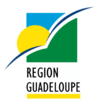A Caribbean haven, Guadeloupe benefits from a very favourable climate and a heavenly environment. Nevertheless, our territory, like the entire Caribbean, is exposed to major natural hazards: earthquakes, volcanic eruptions, hurricanes, tsunamis. Catastrophes have hit it hard, among which devastating hurricane Hugo, in 1989.
Fighting natural risks is therefore deemed a priority by the Guadeloupe Regional Council. The regional authority is highly involved as far as prevention and innovation are concerned, in view of keeping residents safe.
Given its tropical climate and location at the centre of the Caribbean, Guadeloupe is jeopardised by six major threats: earthquakes, volcanoes (since local Soufrière remains an active volcano), landslides, hurricanes, floods, tsunami. Each of which is magnified by other elements: topography, proximity to the sea, soil and subsoil types. Furthermore, global warming has been proven to boost these phenomena.
These natural hazards may entail potentially devastating effects for our territory as a whole. Yet, it has been developed without much taking into consideration such specificities, hence its cities, housing and, as a matter of fact, inhabitants prove extremely vulnerable.
Fostering adequate building and planning methods is vital. The regional authority takes natural risks into account when it comes to developing the archipelago, but also supports studies and organisations providing a better understanding of those threats and promoting awareness among the population.
In order to preserve the territory and protect its people, the Guadeloupe Regional Council endeavours to fight natural hazards, notably via its Regional Development Scheme (SAR). Building according to modern standards with innovative and efficient materials, adequate planning, or spreading awareness and knowledge among the population are some of the strands developed by the regional authority.

